Website Search Navigation
Requires Mobile 5.0+
The search navigation enhances the customer experience and makes it easier for your customers to find what they are looking for quickly and conveniently by searching for a specific category or business.
Categories and Search
Categories are ways to group your businesses in your marketplace, for example, a restaurant aggregation marketplace might have categories (cuisines), such as Burgers, BBQ, Breakfast, and Drinks. Retail marketplaces can have general shopping categories, for example, Clothes, Flowers, Butchers, Fruit & Veg, or you can have very bespoke categories for your unique market, for example, a brewery aggregation marketplace could have IPA, Lager, Ale, and Casks.
When using the search navigation and a word is used in both a category and a business, the results will include both the relevant categories and the businesses associated with that word. For example, if customers search for 'pizza,' they will not only find the 'pizza' category but also any businesses that have chosen the 'pizza' category and those with 'pizza' in their business name. On the outlet’s card, only the first three categories will be displayed, however, customers will still be able to search for the rest of the categories applied to the business.
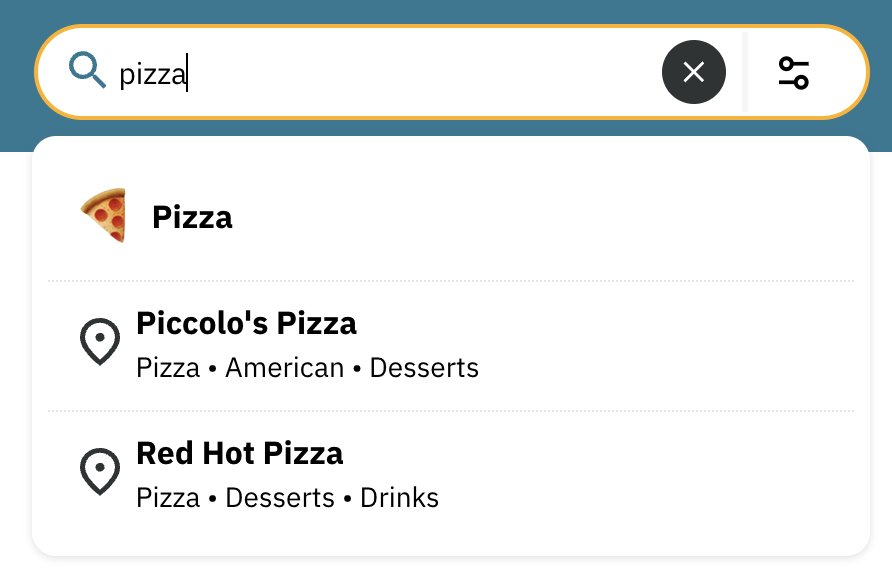
Website search navigation
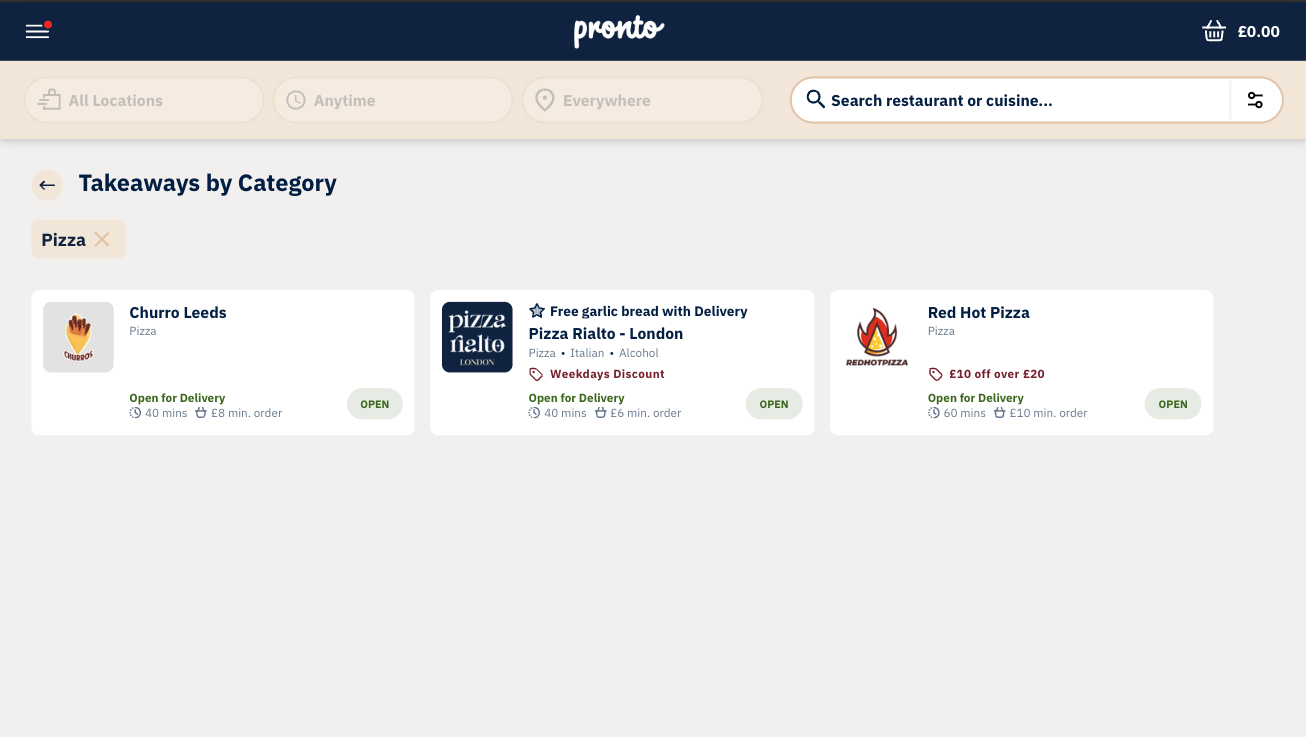
Businesses displayed as a result of category search
Categories Filter
When using the category filter, it will show all the categories that have been assigned to the businesses. Customers can then easily choose the categories they're interested in, and show them the outlets that match their selection.
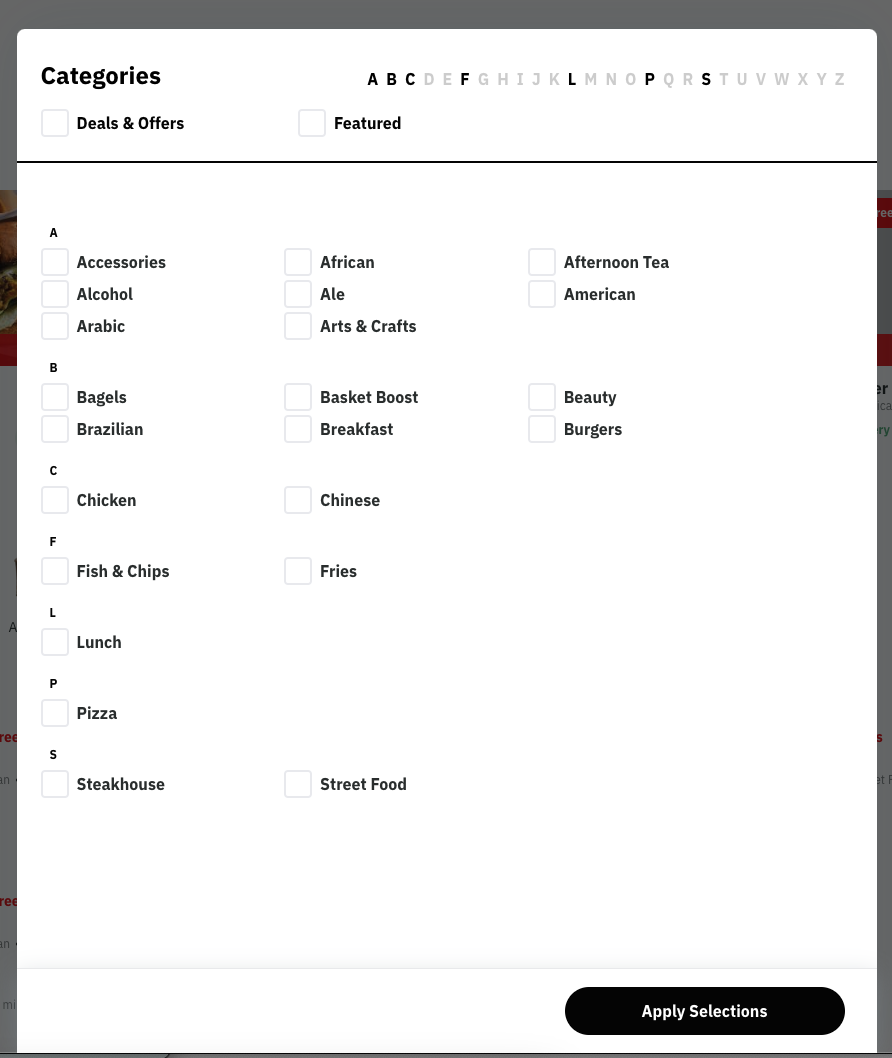
Categories displayed using the category filter

Businesses displayed as a result of the category selection using the category filter
Manage Categories for your Marketplace
Only users with a Partner access level will be able to manage marketplace categories.
How to locate Categories: Redbox Management → Marketplaces → Details → Categories
Once a category has been set up in the management portal, it will be available for your businesses to use. If you need a new category that is not already available on the list, please raise a Support Ticket with your request and a member of our team will be able to help you. The below settings can determine what permissions have been set for the businesses to use the categories and how they display on the app.
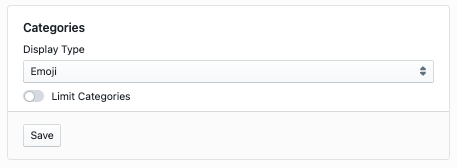
Marketplace category settings
Display Type
Categories are visually represented through either emojis or images and this helps customers navigate more intuitively and makes the categories more visually appealing.
Wherever a category should use an image or an emoji on the mobile app, will be determined by the display type selected.
If you have selected an image as a display type, but the category only uses an emoji, the emoji will display as a default and vice versa. As a default, the mobile app will use 📦 for business type and 🍽️ for restaurant-type marketplaces if there is no image or emoji assigned to your chosen category.
Limit Categories
If you want to limit the categories your businesses are allowed to use, you can enable the Limit Categories toggle. You will be able to select categories from the list you want your businesses to choose from.
If a limit has been set from the marketplace, businesses will only be allowed to use categories from that list. If not, they will be able to choose any category available in the management portal.
Add categories to your businesses
Navigate to Redbox Management Portal → Business → Details tab → Categories Tags
There is no limit to how many categories you can use and we advise businesses to select at least 3. This helps customers explore different sections of the menu and may potentially discover new items they may not have considered before. This can lead to increased customer engagement and potentially boost sales for specialised menu items too.

Business category tags
Hide the category bar
This applies to the mobile app only.
How to find Apps: Redbox Management → Marketplaces → Apps
Once on the Apps page:
Go to the ‘App Config’ section.
Select the ‘Hide Category bar’ toggle.
Each category has an emoji or image assigned to it, which it only displays in the category navigation on your mobile app. Bespoke categories benefit from using images that work well for your chosen marketplace, instead of emojis. Enabling the Hide Category bar toggle will hide the categories list component on the mobile app, however, customers will still be able to search categories using the search bar navigation.

Mobile app with and without the category bar displaying
Restaurant Marketplace
Categories for restaurants are used to classify and group based on the type of cuisines they offer or the dining experience they provide.
Dietary Preferences and Allergen Information
Categories can support specific dietary preferences or allergies. For example, if a restaurant has categories like Vegetarian, Vegan, Gluten-free, or Nut-free, by selecting these categories, customers can easily identify menu options that meet their dietary needs.Using emojis as a display type
We encourage restaurant marketplaces to use emojis. Image is an option that is mainly for retail marketplaces that need custom categories, but all restaurant marketplaces use a similar set of categories, so they all use emojis.
-20240110-145827.png?inst-v=32121947-5341-4fd4-b397-7803e2998ad4)
Restaurant marketplace type using emojis
Retail Marketplace
Using categories for a retail marketplace is a common and effective way to organise and present products to your customers:
Keep it clear and user-friendly
When you request for new categories to be created, please use names that are easy to understand and describe what they contain, avoiding technical or complicated terms. Consider how your target audience will search for products when organising these categories.
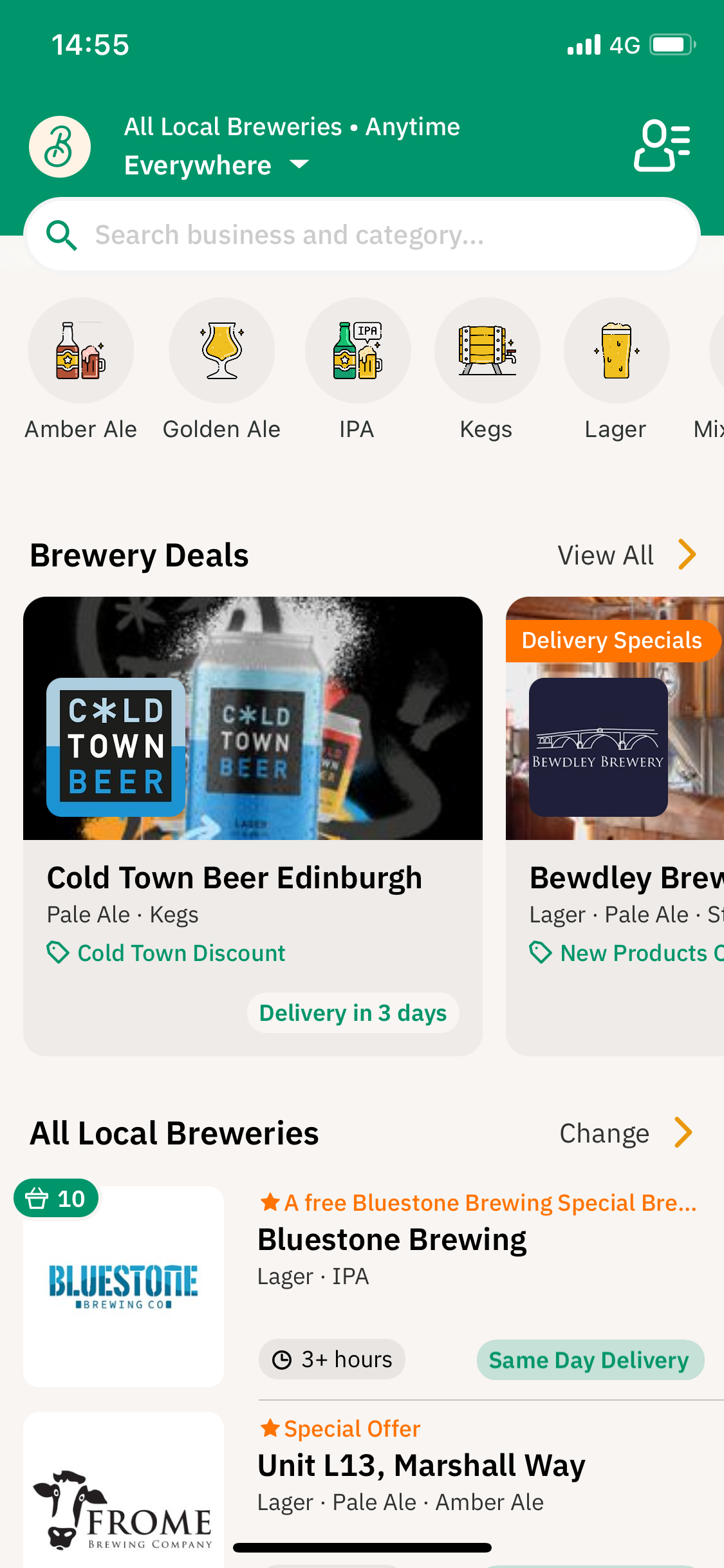
Retail marketplace type using images
How to get the Most from Categories
Optimise for SEO
Categories can play a significant role in search engine optimisation (SEO). Use relevant keywords in your category names and descriptions to improve your website's visibility in search engine results. Consider conducting keyword research to identify popular search terms related to your products.Limit the number of categories
While you want to create a comprehensive structure, avoid overwhelming your customers with too many categories. A large number of categories can confuse them and make it harder to find what they're looking for.Use Business Segments by category
You can create Business Segments that focus on specific categories, this will enable you to easily group all the outlets using that particular category within a segment.
